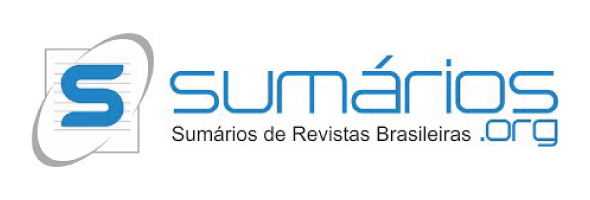Oral Pemphigus Vulgaris in Old Woman: Conducts of a Challenging Case
Pênfigo Vulgar Oral em Idosa: Condutas de um Caso Desafiador
DOI:
https://doi.org/10.29327/25149.48.1-2Keywords:
Pemphigus, Autoimmune Diseases, Oral MucosaAbstract
Pemphigus is an autoimmune disease that, depending on the level of epithelial involvement, can be classified into pemphigus vulgaris, vegetans, erythematosus and foliaceus. In addition to these, there is also the so-called paraneoplastic pemphigus, which occurs especially when there is a link to malignant neoplasms with emphasis on lymphomas. Only the vulgaris and vegetans types can affect the oral mucosa, with pemphigus vulgaris being the most prevalent one. The pathophysiological mechanism of the disease is characterized by the action of autoantibodies against the desmoglein proteins of the desmosomes found in the epithelial cells, thus triggering the formation of intraepithelial clefts and blisters. The management of patients with oral pemphigus vulgaris is quite challenging, especially in cases of older individuals and patients with comorbidities. This study discusses contemporary aspects of oral pemphigus vulgaris and elucidate the case of an old woman affected by the disease, highlighting all the propaedeutics used in her care and the treatment employed, with the use of systemic corticosteroids and constant follow-up of the patient’s condition, since pemphigus vulgaris is a disease that has no cure.
References
oral e maxilofacial. Pênfigo. Elsevier editora; 2009. p. 767- 771.
2. Kasperkiewicz M, Ellebrecht CT, Takahashi H, Yamagami J,
Zillikens D, Payne, AS, et al. Pemphigus. Nat Rev Dis Primers
3(1):1-18.
3. Ben Lagha N, Poulesquen V, Roujeau JC, Alantar A, Maman L. Pemphigus vulgaris: a case-based update. J Can Dent Assoc.
2005 Oct;71(9):667-72.
4. Porro AM, Seque CA, Ferreira MCC, Enokihara MMSS.
Pemphigus vulgaris. An. Bras. Dermatol. 94(3):264-278.
5. Wojnarowska F, Venning VA. Immunobullous Diseases.
Rook’S Textbook Of Dermatology, Wiley-Blackwell; 2010. p.
1-62.
6. Parameswaran A, Attwood K, Sato R, Seiffert-Sinha K, Sinha
AA. Identification of a new disease cluster of pemphigus
vulgaris with autoimmune thyroid disease, rheumatoid
arthritis and type I diabetes. Br J Dermatol. 2015;172(3):729-
38.
7. Arbabi M, Ghodsi Z, Mahdanian A, Noormohammadi
N, Shalileh K, Darvish F, et al. Mental health in patients
with pemphigus: an issue to worth consideration. Indian J
Dermatol Venereol Leprol. 2011;56(5):541-5.
8. Ambiel MV, Roselino AM. Prevalence of Metabolic
Syndrome and its components in a Brazilian sample of
pemphigus patients. An Bras Dermatol. 2014;89(5):752-6.
9.Tsunoda K, Ota T, Saito M, Hata T, Shimizu A, Ishiko A, et
al. Pathogenic relevance of IgG and IgM antibodies against
desmoglein 3 in blister formation in pemphigus vulgaris. Am J
Pathol. 2011;179(2):795-806.
10. Hammers CM, Stanley JR. Mechanisms of Disease:
Pemphigus and Bullous Pemphigoid. Annu Rev Pathol.
2016;11:175-97.
11. Di Zenzo G, Amber KT, Sayar BS, Muller EJ, Borradori L.
Immune response in pemphigus and beyond: progresses and
emerging concepts. Semin Immunopathol. 2016;38(1):57-74.
12. Pan M, Liu X, Zheng J. The pathogenic role of autoantibodies
in pemphigus vulgaris. Clin Exp Dermatol. 2011;36(7):703-7.
13. Joly P, Litrowski N. Pemphigus group (vulgaris, vegetans,
foliaceus, herpetiformis, brasiliensis). Clin Dermatol.
2011;29(4):432-6.
14. Bystryn JC, Rudolph JL. Pemphigus. Lancet.
2005;366(9479):61-73.
15. Mustafa MB, Porter SR, Smoller BR, Sitaru C. Oral mucosal
manifestations of autoimmune skin diseases. Autoimmun Rev.
2015;14(10):930-51.
16. Ganapati S. Eponymous dermatological signs in
bullous dermatoses. Indian J Dermatol Venereol Leprol.
2014;59(1):21-3.
17. Ohta M, Osawa S, Endo H, Kuyama K, Yamamoto H, Ito
T. Pemphigus vulgaris confined to the gingiva: a case report.
International journal of dentistry. 2011;2011:207153.
18. Dagistan S, Goregen M, Miloglu O, Cakur B. Oral pemphigus
vulgaris: a case report with review of the literature. J. Oral Sc.
2008;50(3):359-62.
19. Santos TS, Piva MR, Kumar PN, Martins Filho PRS,
Reinheimer DM, Acevedo CR. Importância do cirurgiãodentista
no diagnóstico precoce do pênfigo vulgar. RGO.
2009;57(3):5.
20. Tavakolpour S. Current and future treatment options
for pemphigus: Is it time to move towards more effective
treatments? Int Immunopharmacol. 2017;53:133-42.
21. Hertl M, Jedlickova H, Karpati S, Marinovic B, Uzun S, Yayli
S, et al. Pemphigus. S2 Guideline for diagnosis and treatment-
-guided by the European Dermatology Forum (EDF) in
cooperation with the European Academy of Dermatology
and Venereology (EADV). J Eur Acad Dermatol Venereol.
2015;29(3):405-414.
22. Bystryn JC, Steinman NM. The adjuvant therapy
of pemphigus. An update. Archives of dermatology.
1996;132(2):203-12.
23. Kridin K. Pemphigus group: overview, epidemiology,
mortality, and comorbidities. Immunologic research.
2018;66(2):255-70.
24. Pollmann R, Schmidt T, Eming R, Hertl M. Pemphigus:
a Comprehensive Review on Pathogenesis, Clinical
Presentation and Novel Therapeutic Approaches. Clin Rev
Allergy Immunol. 2018;54(1):1-25.
25. Broussard KC, Leung TG, Moradi A, Thorne JE, Fine JD.
Autoimmune bullous diseases with skin and eye involvement:
Cicatricial pemphigoid, pemphigus vulgaris, and pemphigus
paraneoplastica. Clin Dermatol. 2016;34(2):205-13.
26. Amagai M, Tanikawa A, Shimizu T, Hashimoto T, Ikeda S,
Kurosawa M, et al. Japanese guidelines for the management
of pemphigus. J Dermatol. 2014 Jun;41(6):471-86.
27. Arpita R, Monica A, Venkatesh N, Atul S, Varun M. Oral
Pemphigus Vulgaris: Case Report. Ethiop J Health Sci.
2015;25(4):367-72.
28. Robati RM, Rahmati-Roodsari M, Dabir-Moghaddam
P, Farnaghi A, Mahboobi-rad F, Rahimi H, et al. Mucosal
manifestations of pemphigus vulgaris in ear, nose, and
throat; before and after treatment. J Am Acad Dermatol.
2012;67(6):249-52.
29. Hale EK, Bystryn JC. Laryngeal and nasal involvement in
pemphigus vulgaris. J Am Acad Dermatol. 2001;44(4):609-11.
30. Cholera M, Chainani-Wu N. Management of Pemphigus
Vulgaris. Advances in therapy. 2016;33(6):910-58.










